Looking for eagles at Ben Mor Coigach in January
January is a challenging time for many of Scotland’s wild inhabitants. In the northwest, the short days are only just beginning to lengthen. Weather conditions often dip below zero, freezing over bogs and frosting trees, while high winds hurtle through the snow-capped hills. Such conditions encourage many animals to migrate to warmer regions or stow themselves away, hibernating until spring. For Scotland’s golden eagle (Aquila chrysaetos), however, there are no such luxuries. They have work to do.
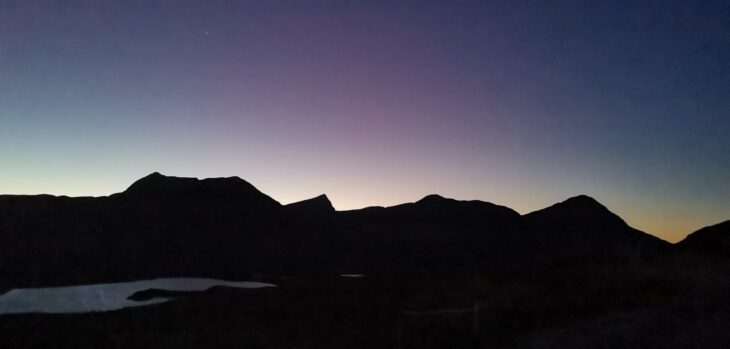
For many young golden eagles, this will be their first winter and they will be facing it alone, often beyond the territory they were raised in. Their ability to scavenge will be particularly tested, as carrion is a common food source for this species during the harsh winter months. But while these young eagles are soaring towards independence, their own parents will be busy prepping for the year to come in a heartening display of teamwork and reliance.
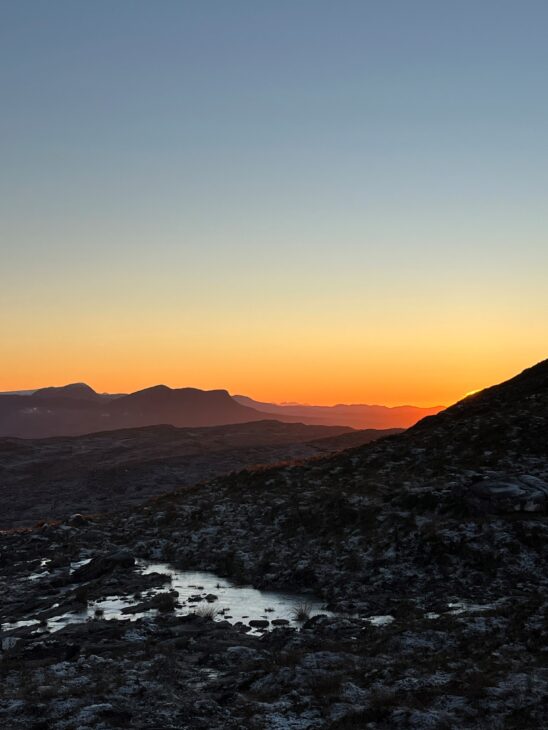
Golden eagles start laying their eggs early in the spring. Their nests, also known as eyries, are considerably large and well-built, so nest maintenance becomes an increasingly prominent part of their lives around January. In Scotland, a mating pair of golden eagles can have between one and six nests within their territory. Research has shown some territories to have as many as thirteen! Mating pairs will choose one of their eyries and begin the annual routine of collecting twigs, heather, grasses, moss and lichens. These foraged items improve an eyrie’s structure, comfort and protection from the elements. It is also this behaviour that makes January a good time to spot eyries and the eagles themselves, visiting their twiggy homes high on the cliffs.
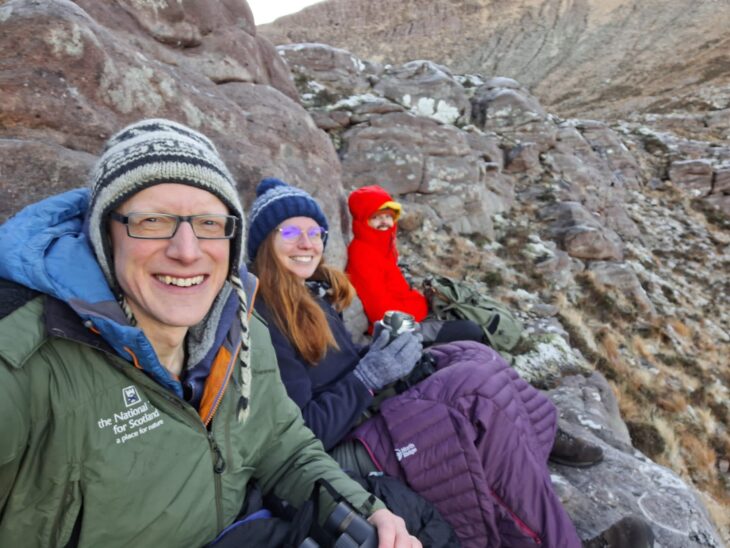
The Trust has been keeping a keen eye on the comings and goings of golden eagles on their Ben Mor Coigach wildlife reserve. In September 2023, I began a year-long volunteer placement with the Trust. Since then, I have been fortunate enough to see otters, porpoises, dolphins, grey seals, a minke whale and a handful of white-tailed eagles, all at the Ben Mor Coigach wildlife reserve. But I was yet to see a golden eagle. So, I was excited to tag along with Reuben Brown (Highland Raptor Study Group) and Beth Harwood (Scottish Wildlife Trust, North Reserves Project Officer), on their search for golden eagles at Coigach.
On an icy January morning, we set off into the undulating hills. The sky was bright and clear, with an angled, winter sun picking out the innumerable details of the vast landscape surrounding the reserve. With visibility so good, hopes for spotting golden eagles were high. After a couple of hours, hiking over frozen boggy terrain, we reached our vantage point, which afforded superb views of the plummeting cliffs that comprise the proud and angular face of Sgùrr an Fhìdleir (The Fiddler).
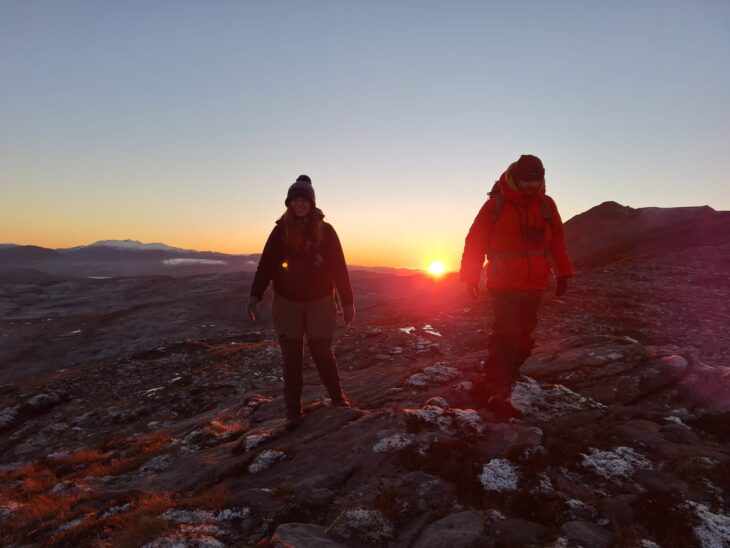
At our vantage, we layered up against the temperatures that were likely a few degrees below freezing. Then we withdrew our binoculars and began scanning the cliffs and hillsides for signs of eyries. We also searched the clear skies overhead for the distinctive silhouette of a golden eagle.
Then it was time to head back. Despite no eagle sightings, it had been an enjoyable day and morale was still high. Having already climbed to a fair height, it was decided that we would summit a nearby hill on the return journey, giving us great views over the hills that had begun to turn amber under the setting sun.
Then, as we descended from the hill, our chatter was silenced by a gliding presence overhead. A golden eagle soared past, only a matter of metres above. We watched in silence as it stayed close to the hillside, arcing in large circles, before eventually changing its course and setting off across the glen. It soon became little more than a thin line in the distance.
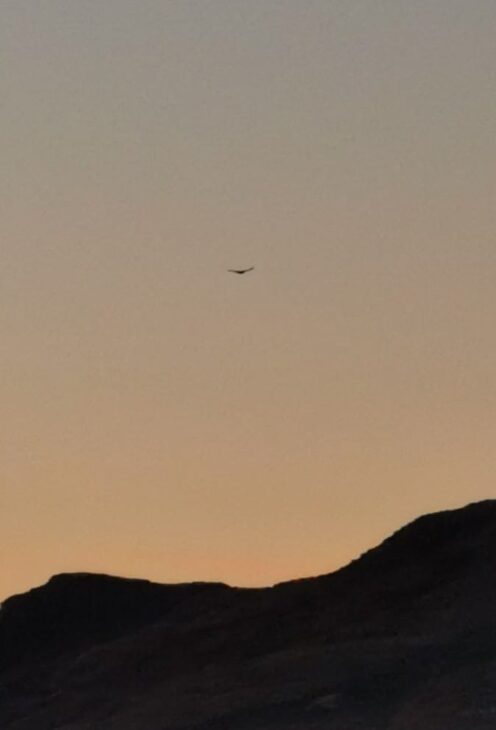
Reuben spotted the eagle once more, heading towards the hills we had been observing just an hour ago. The light was failing by this time, and although it was certainly a golden eagle, it was difficult to determine much more. However, I glimpsed a lighter streak among its tail feathers. This can be a sign of young age in golden eagles, for moulting often pauses over the winter, meaning that lighter, naive feathers can remain for a few years. So, it may be wishful thinking, but it is nice to imagine this eagle as one of those youngsters mentioned earlier, facing the bleak winter alone.
We walked back as darkness settled over the surrounding hills, silhouetting the likes of Stac Pollaidh against a purpling sky. Eventually, the stars began to glint, and we returned to the car under the light of a head torch. It had been a long, cold and brilliant day, and despite only a brief encounter with just one golden eagle, I was happy to have finally seen one, and glad to have spent the day in such a beautiful place.
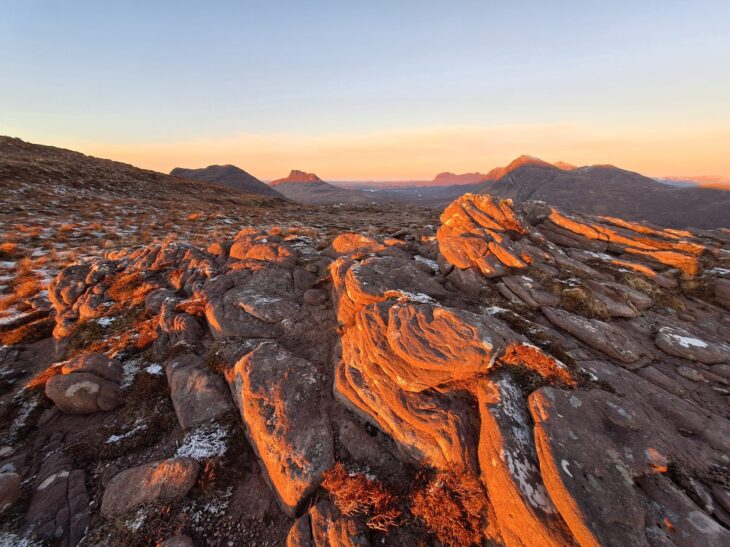
Note: Getting out there and observing wildlife is always encouraged, however, it is important to point out that golden eagles are a Schedule 1 protected bird species. Therefore, it is an offence to intentionally disturb these birds whilst they are building a nest, or at the nest.
Author: Sam Collins is a volunteer, undertaking an academic placement year with the Trust. He is studying Ecology and Conservation Biology with the University of Exeter.
References and further reading:
‘The Golden Eagle (Second Edition)’ by Jeff Watson
‘Raptors: A Field Guide to Survey and Monitoring’ by Jon Hardey
Help protect Scotland’s wildlife
Our work to save Scotland’s wildlife is made possible thanks to the generosity of our members and supporters.
Join today from just £3 a month to help protect the species you love.
Preface
January is a challenging time for many of Scotland’s wild inhabitants. In the northwest, the short days are only just beginning to lengthen. Weather conditions often dip below zero, freezing …
